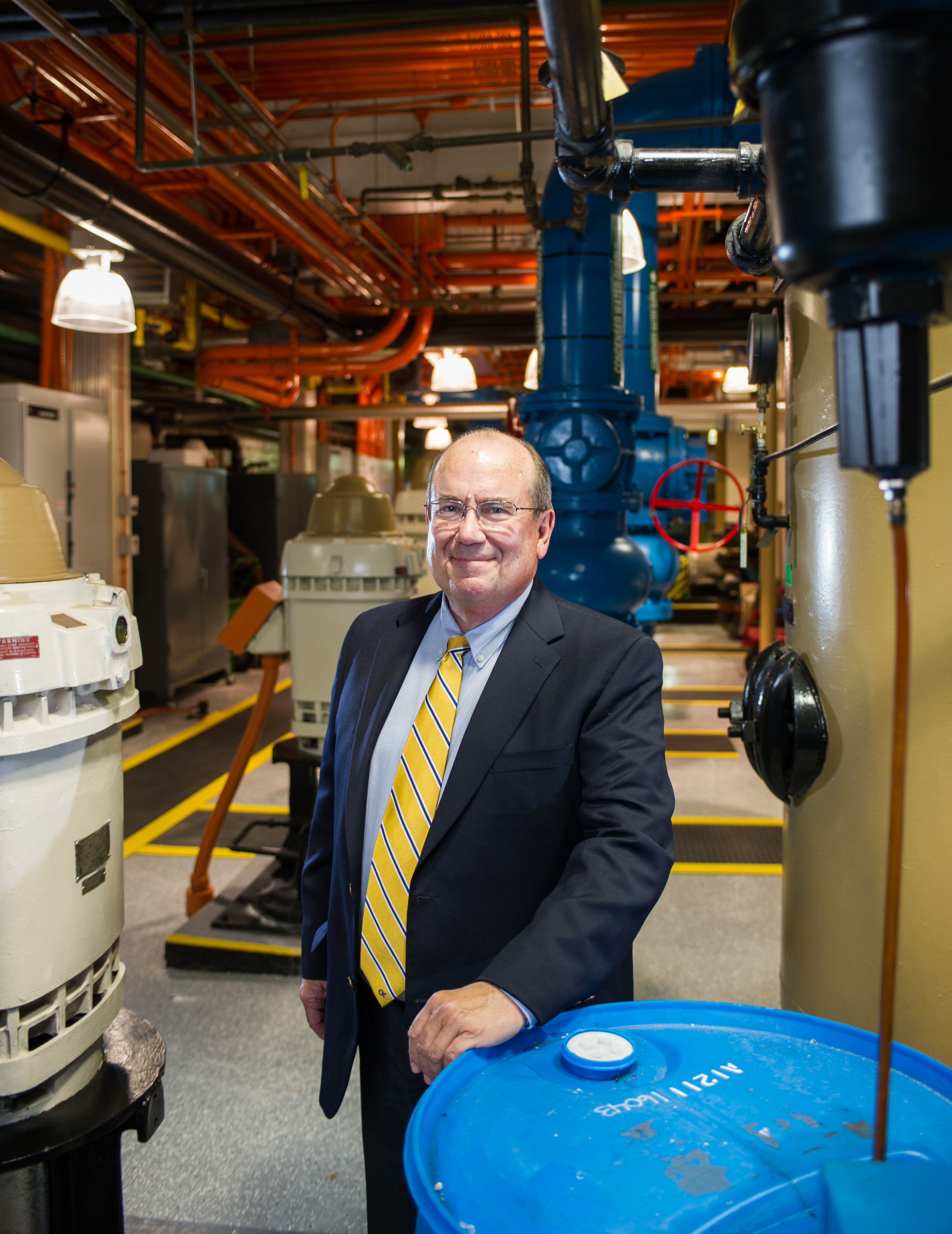
Steve Swant, executive vice president for Administration and Finance, demonstrates leadership by combining his passion for sustainability with the relentless pursuit of a lean bottom line.
Steve Swant is not a green vigilante. He doesn’t drive an electric vehicle. He sometimes uses plastic bags at the grocery store. But as executive vice president of Administration and Finance at Georgia Tech, he’s doing what he can to make sure Tech is a sustainable operation.
“It’s my passion and my team’s passion,” said Swant, who has a background in architecture and urban planning. Swant’s been at Tech since 1996 and, in his nearly 20 years on campus, he has watched the campus get better and smarter about its sustainability practices.
Engineering News-Record (ENR), a leading construction information source, recently named him one of its 2014 Top 25 Newsmakers for innovations and achievements in the construction industry. ENR selected Swant because of his dedication to sustainability, which he believes should be embedded in everything on campus.
“It’s not about doing the ‘green’ thing, but the right thing for the campus,” he said. “It’s about making sure Georgia Tech continues to exist.”
Even before writing his master’s thesis at the University of California, Los Angeles, on how to get people to take ownership of sustainable practices, Swant has been interested in integrating sustainability into business. Earlier in his career, he planned courthouses, jails and New York City office towers. In his current position, he oversees a varied portfolio that includes capital planning and space management, housing, dining, landscaping, facilities, parking and transportation, information technology, human resources, legal affairs, and other campus services. He aims to “put meaning behind the effort” by organizing and optimizing these areas around campus. Though he pushes a certain sustainable agenda in his business rationale, it’s not a hard sell at Tech.
“I’m fortunate that people here are passionate about it,” he said.
That’s not just true for campus. In the Atlanta community, Swant fosters a partnership with the Midtown Alliance, where he sits on the organization’s executive board. He’s found the local construction community is also supportive of Tech’s goal of cultivating a sustainable enterprise.
“More and more firms are finding it’s just good business,” he said. “We have a lot of great firms in the city that share the agenda, and when they bid on projects, they make the case that they can do it the way we need it done.”
Tech has a special way of building on its campus, outlined in the Georgia Tech Yellow Book, a homegrown document of nearly 500 pages outlining Tech’s design standards.
Building a Sustainable Campus
At times construction may seem an ever-present element of campus. While it can be the cause of temporary inconvenience, it leads to award-winning facilities and campus grounds. In the past five years, Tech has been honored repeatedly by the Princeton Review’s Green Honor Roll, Tree Campus USA, the Atlanta Bicycle Coalition, and Sierra Magazine for its campus amenities. Specific to buildings, the Carbon Neutral Energy Solutions Laboratory, Clough Undergraduate Learning Commons, and North Avenue Apartments have all been the subject of positive external attention for their leading-edge design and renovations. The recognition is nice, but it’s not the focus of Swant’s attention.
“I like to think we’d do the same thing without the incentive of awards,” he said. “The return on investment is worth it in these facilities. The key is being smart about using the available technology.”
Technology employed in a new HVAC system for the Sustainable Education Building will save an estimated 10 percent in annual utilities, or $15,000 per year. An air optimization project at the Global Learning Center is projected to save $88,000 annually. At the Economic Development Building, a ventilation project currently in progress is estimated to reduce energy usage by 28 percent and save $64,000 per year.
Swant thought he might spend five to seven years at Tech, but 18 years later, he’s still here and still excited about the future of campus. The under-construction Engineered Biosystems Building, which will house technologically advanced biological laboratories and research space, is the beginning of a multi-building, multi-phase ecologically-focused district of the campus that will include two additional buildings and an ecocommons. The area will provide green space and reduce stormwater runoff.
Howard Wertheimer, director of Capital Planning and Space Management, has set an ambitious goal of using no potable water for irrigation on campus within five years. Wertheimer, whose department reports to Swant, is grateful to have an advocate and colleague who also believes sustainability should be inherent in Tech’s built environment.
“Steve sees the return on investment outside the spreadsheet,” Wertheimer said. “He looks through a broad lens at long-term investment.”
Aside from the progress being made at the Engineered Biosystems Building, Swant looks forward to the continued integration of Tech into Midtown around Tech Square, as well as revitalizing historical buildings at the core of campus and building a strategy for an enhanced Student Center.
“We want to inspire more innovation and integration, and provide the right amenities and connections between the university and the community,” he said.
